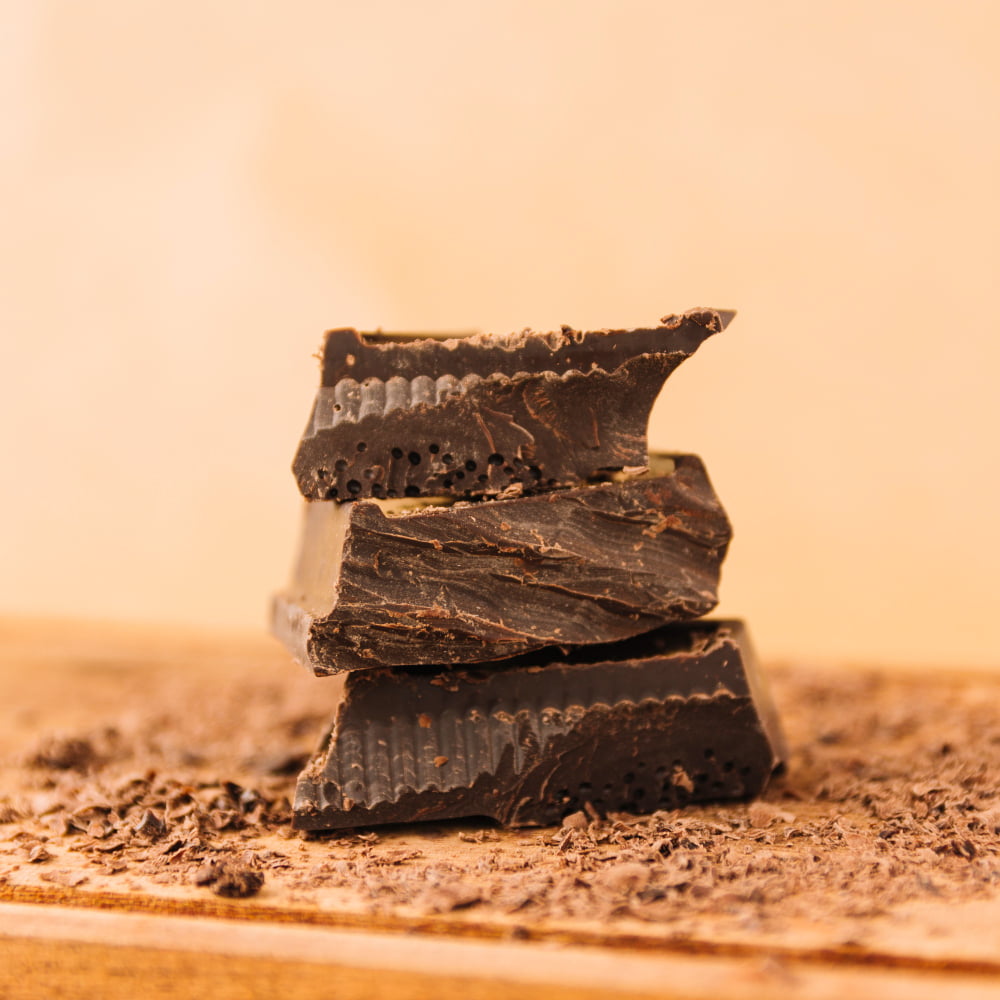Exploring the surprising blend of lemon and chocolate can unlock a new realm of culinary delight.
Lemon and chocolate might seem like an unusual pairing, but when combined correctly, they can create a harmonious blend of tart and sweet flavors. The key lies in balancing the intensity of both ingredients, and this article will guide you through the various ways to achieve this.
Whether you’re a home baker or a professional chocolatier, you’ll find a range of options here, from simple lemon-infused chocolate truffles to more complex desserts like lemon chocolate tart. Get ready to explore the delicious world of lemon and chocolate pairings.
Inside
Lemon and Chocolate Pairing in Desserts

The pairing of lemon and chocolate in desserts hails from an adventurous approach to culinary experiments. Lemon, with its tart profile, offers a sharp contrast to the sweetness or bitterness of chocolate. It might seem like an odd combination at first. However, due to the versatile nature of both these ingredients, they can create an unexpectedly harmonious amalgamation of flavors in desserts.
When pairing these two in desserts, here are a few crucial aspects to consider:
Combine Lemon with Dark Chocolate for a Balanced Flavor: The bitterness of dark chocolate works well with the zing of lemon, producing a balanced, unique flavor profile.
Use Lemon Zest for a Subtle Flavor: If you want only a hint of lemon, use finely grated lemon zest in your chocolate dessert. The zest does not overpower the chocolate and only leaves a delicate lemony trace.
Add Lemon Extract to Chocolate Desserts: Similarly, you can add a few drops of lemon extract to your chocolate dessert for a fresh citrusy undertone.
Try Different Chocolate Varieties: Experiment with milk, dark, and white chocolate to discover your preferred lemon and chocolate pairing. Each type offers a unique taste experience.
White Chocolate and Lemon is a Classic Combo: White chocolate and lemon are often used together in desserts due to their complementary sweet and tart flavors. Lemon cuts through the richness of white chocolate, achieving a balanced taste.
Improvise with Candied Lemon Peels: Coating candied lemon peel with chocolate can create a distinctive dessert. The sweet crunch of the peel topped with smooth chocolate opens up an exciting texture and flavor palette.
Remember, the secret to perfecting this unconventional pairing lies within your willingness to experiment. So, let these ideas guide and inspire your next lemon and chocolate dessert creation.
Impact of Lemon On Chocolate Flavor
Lemon’s citrusy tang can offer a refreshing contrast to the rich and creamy taste of chocolate, creating a unique fusion of flavors. It brings out the subtle nuances and fruitiness of certain types of chocolate, particularly dark chocolate with a high cocoa content. Yet, getting the balance right is integral to prevent the lemon from overpowering the chocolate’s sweetness.
When beginning to experiment with this combination, you might start with a hint of lemon zest sprinkled on a rich chocolate tart or truffle. The zest interacts with chocolate on a molecular level, enhancing its flavor profile without adding additional moisture.
Adding lemon juice to chocolate can lead to another delightful twist. However, the acidic properties of lemon juice can affect the texture of the chocolate, making it grainy if not incorporated correctly. A technique to avoid this is to ensure the lemon juice is at room temperature before adding it to the chocolate. Remember to add it slowly and stir consistently to achieve a perfect blend.
Pairing lemon with white chocolate is another enticing option. The sweetness of white chocolate effectively contrasts the tang of lemon, leading to a balanced and full-bodied flavor.
So, in essence, while combining lemon and chocolate in desserts might sound unconventional, with careful consideration to balancing flavors and proper mixing technique, this pairing can result in incredible culinary creations.
Baking With Chocolate and Lemon: Best Practices
Choosing a high-quality, dark chocolate, preferably with a high cocoa content, will help strike an elegant balance with the tangy freshness of the lemon. When baking with these two, it is important to add the lemon gradually. Too much citrus can seize up the chocolate, especially if it’s hot and melting. Thus, introducing the lemon zest or juice slowly and while constantly stirring is a crucial step to avoid curdling.
Also, consider the type of recipe. Chocolate lemon tarts or cookies utilize both flavors, giving a delightful contrast in each bite. When making a chocolate and lemon cake, remember to moderate the acidity. Too much lemon juice can react with the raising agent, potentially affecting the cake’s rise.
Another useful tip involves the use of white chocolate. Its creamy, sweet profile can be a perfect counterbalance to the sour tang of lemon. Try incorporating both in a white chocolate mousse or a cheesecake for a pleasing dessert.
For an interesting flavor experience, put a hint of lemon zest in hot cocoa. The zest’s citrus oils blend well with the rich, cocoa flavor, creating a wonderful, unique taste.
Lastly, never discard the lemon after using its juice or zest. Candied lemon peel dipped in dark chocolate can serve as a delightful garnish to any dessert or an elegant little treat on its own. Remember, lemon and chocolate may seem like an unconventional pairing, but creativity and a sense of adventure can result in deliciously rewarding treats.
How to Add Lemon Flavor to Chocolate Cake
Incorporating some lemon zest into the batter is a good starting point. Zest contains the essential oils of the fruit and can provide a concentrated flavor. For a pronounced zest flavor, allow the batter sit for approximately ten minutes before baking. This extra time allows the zest to infuse the batter.
Use of lemon extract is another method. It can be stirred into the wet ingredients before they are combined with the dry ones. Lemon extract is powerful, so use it sparingly – usually around a teaspoon will be sufficient for most recipes.
Alternatively, a homemade lemon syrup can be prepared and poured over the baked cake. This will not only intensify the lemon flavor, but also yield a moister cake. The syrup is simply a mixture of equal parts sugar and lemon juice heated until the sugar dissolves.
Lemon curd is another great option. It can be used as a filling between layers or swirled into the batter before baking for a marvelous marbled effect.
For frosting, cream cheese or buttercream could be flavored with lemon juice and zest for a tangy contrast to the sweet chocolate cake. Microplane graters work best to get the finest zest, which blends smoothly into the frosting. Remember to only zest the yellow part of the lemon peel; the white pith is bitter.
If a recipe includes milk, substituting a portion of it with freshly squeezed lemon juice may enhance the lemon flavor subtly without overpowering the chocolate.
It’s important to remember that the strength of flavors can vary between different chocolate and lemon varieties, so don’t be afraid to adjust the amount used to suit personal preference.
Using high-quality ingredients will add depth to the flavors. Consider splurging on some gourmet dark chocolate and fresh, organically grown lemons. It may not seem like much, but these small details can make a big difference.
Finally, for a spot-on pairing of chocolate and lemon, consider balancing the tartness of the lemon with the percentage of cocoa in the chocolate. Sweeter chocolates can handle more tartness, while more bitter chocolates might work better with less.
Chocolate Lemon Bars Recipe Specifics
To start making these delectable bars, prepare your favorite basic shortbread crust recipe. Press it into the bottom of an oven-safe dish, and bake until golden.
While it cools, make a tangy lemon filling using fresh lemon juice, granulated sugar, and a small amount of flour to aid the stability. Pour this over your pre-baked crust.
For the chocolate layer, melt semisweet chocolate chips and mix with a touch of cream until smooth. Spread this over the lemon layer and allow it to set.
To give the bars a refined presentation, sprinkle them with powdered sugar just before serving. Make sure to store any leftovers in the refrigerator to keep them fresh and delicious.
Remember, when zesting and juicing the lemons, only use the shiny yellow outer layer, not the bitter white inner layer, and always strain to remove any seeds. And lastly, when melting chocolate, ensure it is done slowly over low heat or in a double boiler to prevent it from burning.
With these steps, you should be able to create a delightful dessert that perfectly combines the tartness of lemon with the richness of chocolate.
Substituting Lemon Juice in Chocolate Cake Mix: Techniques
When whipping up a classic chocolate cake mix, introducing the tangy splash of Lemon Juice can be an exciting flavor twist. Nonetheless, it demands a slight tweak in your baking approach.
Firstly, It’s crucial to know that lemon juice is acidic, which can react with the leavening agents in the cake mix. While this can give your cake a lift, adding too much may cause the cake to rise quickly and collapse.
To successfully replace water or milk with lemon juice, take into account the acidity factor. Begin with adding just two teaspoons for every cup of water in the recipe, then gauge the effect on the flavor and the cake’s texture. This is key to ensure the mix doesn’t become too acidic, which could impact the final result negatively.
If you’re looking for a powerful burst of lemon in your chocolate cake, try mixing in some lemon zest. It lends complex citrus notes without interfering with the formula to the same degree as the juice.
Another technique involves warming the lemon juice slightly before incorporating it into the mix. This can help better mix the juice and distribute its flavor evenly throughout the cake.
Remember, baking is part science, part art, and personal taste, so adjusting these steps to suit your preference is encouraged.
Result of Lemon Juice On Baking Powder in Chocolate Cake
Lemon juice, a naturally acidic ingredient, can create a fascinating scientific reaction when mixed with baking powder, which is an essential component in a chocolate cake. This reaction can affect both the texture and leavening of the cake.
The acidic pH of lemon juice can activate the baking powder, causing a release of carbon dioxide gas. This reaction contributes to the cake rising during the baking process, creating a lighter, airier texture.
Too much lemon juice, however, might leave an aftertaste or alter the texture of the cake. To prevent this, ensuring the proper balance between lemon juice and baking powder is crucial. Usually, for each teaspoon of baking powder, you’d need about half a cup of lemon juice.
Experiment with this ratio to slightly change the texture of your cake. An increased amount of lemon juice can give a denser, moister chocolate cake, while reducing it can create a fluffier texture.
It’s vital to also consider the overall flavor balance. The addition of lemon juice should subtly enhance the taste of the chocolate, not overpower it.
Finally, consider adding lemon zest to your chocolate cake. It provides added lemon flavor without further altering the cake’s chemistry. Mix it directly in the batter or sprinkle it on top once the cake is baked.
Remember, baking is a science and changes, even small, can result in significant differences in the final product. When experimenting on your own, note down the measurements to replicate or change the results. Yes, it’s fun, but some precision will avoid a baking disaster.
Choosing Spices to Complement Chocolate and Lemon
There are a few key spices that work well with the distinctive pairing of lemon and chocolate.
First, cinnamon offers a warm contrast to the tangy, bright flavor of lemon. When paired with the earthiness of chocolate, it creates a harmonious flavor balance.
Secondly, cardamom has a sweet and spicy flavor profile that aligns well with both lemon and chocolate, adding depth and complexity to the overall taste.
Ginger, with its vibrant and slightly spicy flavor, enhances both the freshness of lemon and the richness of chocolate. It acts like a conduit, bridging the gap between these two flavors.
As a slightly unexpected addition, basil can highlight the citrus notes of lemon while balancing the sweetness of chocolate. Its mild, sweet-spicy flavor enhances the combination rather than overpowering it.
Lastly, vanilla, while not technically a spice, is universally acknowledged as a perfect companion to both chocolate and lemon. Its sweet, floral notes help bring out the richness of chocolate and the zesty flavor of lemon.
When adding these spices to your chocolate and lemon desserts, remember to add them gradually, tasting as you go, until you find the right flavor balance.
Experimenting With Lemon Curd and Chocolate Ganache
Experimentation brings out the best in both lemon curd and chocolate ganache, each offering their unique contributions to this adventurous pairing.
Lemon curd carries a sharp, acidic punch, cutting through the richness of the chocolate, providing a widely appreciated contrast. When creating this combination, use a smooth, creamy chocolate ganache to counterbalance the tartness of the lemon curd.
To experiment with these flavors, start with a simple yet delectable chocolate tart. After baking and cooling your tart base, spread a generous layer of dark chocolate ganache, allowing it to set slightly. When the ganache is firm to touch, spoon lemon curd onto the surface, creating an appealing pattern.
Alternatively, create bite-size delights by piping chocolate ganache into choux pastry or macarons, injecting a small amount of lemon curd into the center. This produces a surprising burst of citrus with each bite.
Another option involves layering. Spoon a small amount of lemon curd into dessert glasses, top with crumbled chocolate cake, then another layer of lemon curd, followed by a thick layer of chocolate ganache. Repeat these layers until you reach the top of your dessert glass, garnishing with a dollop of ganache and a twist of lemon peel.
Remember, the secret to this pairing is balance. You need the perfect equilibrium between bitter-sweet chocolate and zesty lemon, a harmony that tantalizes the palate. It’s essential to adjust your ingredients to your personal preference, playing with the contrast until you find your ideal balance. As with all cooking experiments, always taste as you go.
White Chocolate and Lemon Combination: Details
White chocolate, with its buttery and sweet profile, matches quite harmoniously with the crisp, tangy flavor of lemon. When blended together, these two create an extraordinary gustatory experience.
The unique creaminess of white chocolate can balance lemon’s sharp tanginess, bringing about a refreshing, tangy, sweet fusion. White chocolate’s rich, yet subtle flavor works as a delightful stage for lemon to shine, enhancing its zest without overwhelming the senses.
Creating desserts with this pairing requires keeping a few factors in mind:
- Keeping the proportion right is critical. Too much lemon could dominate, while a heavy-handed addition of white chocolate may mute the lemon.
- Melting white chocolate gently and gradually prevents it from burning, ensuring a silky blend. A double boiler is ideal for this purpose.
- Lemon zest can be a preferred choice over lemon juice owing to its concentrated flavor and less likelihood to interfere with the texture.
- Finding a chocolate with a high proportion of cocoa butter can improve taste and texture. Superior quality white chocolate will help elevate the lemon notes.
- For a clearer lemon taste, consider using lemon extract. It can offer a more intense, pure flavor that sings alongside white chocolate.
Remember, white chocolate and lemon desserts should strike a balance of sweet and tart. It’s all about finding the sweet spot of flavor intensity that delights the palate. Depending on personal preference, adjustments may be required. Regardless, exploring this pair opens a new world of culinary delight.
Role of Lemon in Enhancing Chocolate Tastes
The acidity in lemon acts as a flavor enhancer, intensifying the cocoa’s depth when paired with chocolate. This coupling creates a balance where the lemon’s citrus zest cuts through the richness of the chocolate, making it less overwhelming. The contrasting tastes make each bite interesting, sparking a set of different flavors in each mouthful.
– Have a subtle approach when adding lemon to chocolate recipes, avoid overpowering the distinct essence of the cocoa.
– When baking, the addition of lemon zest rather than juice is a common practice. It provides a burst of lemon flavor without adding extra liquid that could impact the recipe’s moisture levels.
– Being mindful of the type of chocolate is also crucial. Dark chocolate pairs exceptionally well with lemon due to its bitterness, creating a pleasant balance of flavor profiles.
– Additionally, white chocolate and lemon are a popular combination because of white chocolate’s creaminess and sweetness that invite the refreshing tanginess of the citrus.
– Try using lemon-infused chocolate or lemon-chocolate chips for convenience. These products give both flavors without the hassle of combining them yourself.
– Including a bit of lemon zest or a tiny squeeze of juice when melting chocolate for dips or coatings could add a citrusy twist to your dessert as well.
Remember, the objective is to enhance, not overshadow, one flavor with the other. The combination should result in an elevated, harmonious blend that seamlessly marries the richness of chocolate and the refreshing zest of lemon.
Lemon’s Influence On Chocolate Cake Batter
Lemon, when stirred into a chocolate cake batter, plays a pivotal role in elevating the overall flavor profile. As an acid, lemon reacts with the alkaline components, notably the baking soda, creating carbon dioxide in the process. This reaction not only lends a light and airy consistency to the cake but also subtly brightens the rich, heavy notes of the chocolate.
Through its high citric acid content, lemon adds a tart dimension which offsets the sweetness of the chocolate, introducing a nuanced flavor balance. It also enhances the local flavors by bringing forth the hidden notes of the chocolate.
To successfully integrate lemon into chocolate batter, here are the steps:
- Gradually incorporate lemon zest or juice into the wet ingredients.
- Upon working with pure cocoa powder, balance the zesty tang with the this base ingredient.
- Experiment by using lemon-infused sugar or adding lemon extract to achieve varying intensity of flavor.
- Monitor the consistency while adding lemon juice as too much of it could affect the batter’s structure.
- Experimentation is key. Every chocolate type will react differently to lemon addition. Semi-sweet might appreciate a little zest while dark chocolate could warrant for a tart lemon glaze.
Remember, the goal is not to overpower the chocolate but add a pleasing contrast that will bring depth and intrigue to your culinary creation.
The Intricate Taste Profile of Chocolate and Lemon Pairings
Lemon’s inherent tanginess cuts through the richness of chocolate, delivering a bold contrast, allowing the two flavors to gracefully coexist. This complex interplay is characterized by the following key features:
- The initial tasting experience is highlighted by the bittersweet notes of chocolate that, when paired with the tartness of lemon, offers a refreshing counterbalance.
- As chocolate is a fat-based ingredient, it requires an acidic, flavorsome complement to enhance its sweetness. Here, lemon serves an intricate role in livening up the taste profile.
- While the chocolate provides a deep, mellow flavor, the lemon adds some much-needed acidity and zest, greatly diversifying the taste palette.
- During the tasting cycle, the chocolate’s creaminess is pleasantly interrupted by tart undertones, as the lemon helps to reset the palette, preventing an overload of richness.
- Relishing the aftertaste, one can notice the purpose of this unique pairing. The residual bitterness of chocolate, when softened by lemon’s tang, leaves an intriguing yet pleasant taste lingering in the mouth.
Thus, experimenting with a few chocolate-lemon desserts could be an interesting venture, ranging from lemon-infused chocolate cakes to white chocolate lemon bars and lemon drizzled chocolate cookies, where the precise ratio of lemon to chocolate can be played around to achieve the desired intricate taste profile.
Lemon and Chocolate in Recipes: Complementary or Clash
The combination of lemon and chocolate in recipes can be quite intriguing to many. The surprising mix of the tart freshness of lemon and the sweet, rich depth of chocolate creates a flavor profile that is complex yet harmonious.
The key lies in how these ingredients are managed. When mixed carelessly, the clash of tastes can be off-putting, resulting in a bitter, acrid concoction. But with precision, the tangy notes of lemon can actually help enhance the sweetness of the chocolate, offering a flavorful twist that’s truly out of the ordinary.
To successfully pair these flavors, consider:
- Strengthening the foundation by beginning with a basic chocolate recipe. Brownies, chocolate cakes, or even truffles can serve as a great starting point.
- Introducing the lemon in subtle ways. Lemon zest in the batter, a hint of lemon juice in the frosting, or a thin layer of lemon curd can inject just enough tang without overwhelming the palate.
- Complementing the pair with a neutral element. Whipped cream, for instance, can balance the robust flavors, offering a softer taste and creamier texture.
- Testing and tasting. Start with a small ratio of lemon to chocolate – you can always inject more citrus tang but extracting it could be difficult.
Remember, the success of mixing lemon and chocolate greatly depends on the quality of your ingredients and your willingness to experiment. Happy baking!
Successful Pairings of Different Flavors With Lemon and Chocolate
Experimenting with a myriad of additional flavors enhances the complexity of lemon and chocolate pairings. First on the list is vanilla, known for its aroma and sweetness. Adding a hint of vanilla into your lemon and chocolate recipes provides a delightful finish, while minimizing any sharp contrasts between the acidity of lemon and the bitterness of chocolate.
Coconut offers a unique taste and texture to lemon and chocolate dishes. Incorporating flaked or shredded coconut uplifts the flavor profile by adding a tropical touch.
Almond is another great pairing choice. Almond flavor has a natural affinity with both chocolate and lemon, be it in the form of almond extract, crushed nuts, or even marzipan.
Lastly, spices like cinnamon and cardamom offer an unexpected yet pleasing warmth and depth to the bright and luxurious combination of lemon and chocolate.
Remember, the key to finding a successful pairing is taste testing. Feel free to experiment with these flavors and adjust quantities for balance, depending on your personal preference.
FAQ
Does chocolate go with lemon?
Yes, the citrus flavor of lemon perfectly complements the rich taste of chocolate.
What flavors pair well with lemon?
Lemon pairs well with various flavors such as apples, apricots, bananas, blackberries, blueberries, cherries, cranberries, figs, gooseberries, grapefruit, grapes, guava, kiwi fruit, lime, mango, nectarines, oranges, papayas, passionfruit, peaches, pears, persimmons, plums, quince, raspberries, and tangerines.
Can lemon zest enhance the flavor of chocolate desserts?
Yes, lemon zest can enhance the flavor of chocolate desserts by providing a tart contrast to the sweetness.
How does the acidity of lemon affect the taste of chocolate?
The acidity of lemon heightens the taste of chocolate by enhancing its rich flavors while adding a refreshing citrus note.
What are some simple recipes that combine lemon and chocolate successfully?
Some simple recipes that successfully combine lemon and chocolate include lemon-flavored chocolate truffles, chocolate lemon bars, and chocolate cupcakes with a lemon zest cream topping, all of which enhance the sweet bitterness of chocolate with the zing of lemon.




